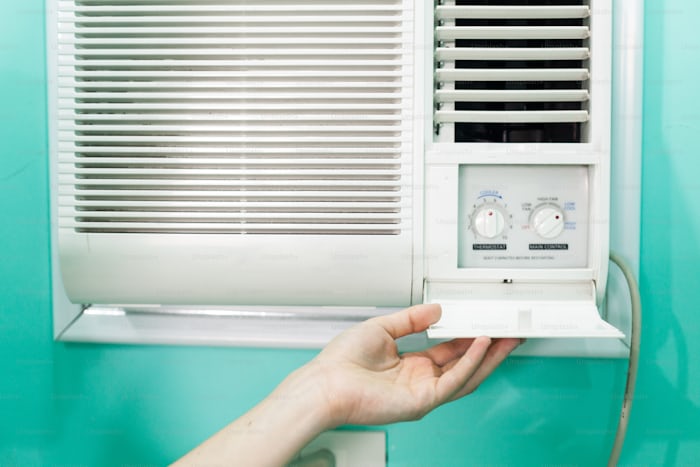What is a Mini Split AC?
A mini split air conditioner, also known as a ductless mini-split, is a type of HVAC system that provides both cooling and heating without the need for extensive ductwork. Unlike traditional central air systems that rely on a network of ducts to distribute conditioned air throughout a building, mini splits consist of two main components: an outdoor compressor/condenser unit and one or more indoor air-handling units.
These indoor units are typically mounted on a wall, ceiling, or floor and are connected to the outdoor unit by a conduit that houses the refrigerant tubing, power cables, and a condensate drain line. The compact design and lack of ductwork make mini splits ideal for a variety of applications, including retrofitting older homes, adding climate control to new additions, or cooling individual rooms or zones within a building.
Benefits of Mini Split Air Conditioners
- Energy Efficiency: One of the biggest advantages of mini-split AC systems is their high energy efficiency. Since they do not rely on ductwork, there is no energy loss associated with air leaks, which can account for up to 30% of energy consumption in traditional central air systems. Additionally, many mini splits are equipped with inverter technology that allows the compressor to adjust its speed based on the cooling demand, further reducing energy usage and utility costs.
- Zoned Cooling and Heating: Mini splits offer zoned cooling and heating, which means you can control the temperature in different areas or rooms independently. This is particularly beneficial in homes with multiple levels or rooms that have different heating and cooling needs. With a mini-split system, you can avoid cooling or heating unoccupied spaces, leading to greater comfort and energy savings.
- Easy Installation: Installing a mini-split system is typically less invasive and more straightforward than installing a central air system. Since there is no need to install ductwork, the installation process involves mounting the indoor units, connecting them to the outdoor unit, and running the conduit through a small hole in the wall. This makes mini splits an excellent choice for older homes or buildings without existing ductwork.
- Quiet Operation: Mini-split air conditioners are known for their quiet operation. The indoor units are designed to operate at low noise levels, making them ideal for bedrooms, offices, and other areas where noise can be a distraction. The outdoor unit is also relatively quiet compared to traditional central air conditioners, which can be noisy and disruptive.
- Improved Air Quality: Mini-split systems often come with advanced filtration systems that can help improve indoor air quality by removing dust, pollen, and other airborne contaminants. This is particularly beneficial for individuals with allergies or respiratory issues.
Choosing the Right Mini Split AC for Your Needs
When selecting a mini-split air conditioner, several factors must be considered to ensure you choose the right unit for your specific needs:
- Cooling Capacity: The cooling capacity of a mini-split system is measured in British Thermal Units (BTUs) and determines how effectively the unit can cool a space. To choose the right cooling capacity, you need to consider the size of the area you want to cool, the insulation quality, and the local climate. For example, a small bedroom may only require a unit with a capacity of 9,000 BTUs, while a larger living room might need a unit with 18,000 BTUs or more.
- Number of Zones: Mini-split systems are available in single-zone and multi-zone configurations. A single-zone system consists of one indoor unit connected to one outdoor unit and is suitable for cooling a single room or area. A multi-zone system, on the other hand, allows you to connect multiple indoor units to a single outdoor unit, providing independent climate control for multiple rooms or zones.
- Energy Efficiency Rating: Look for mini-split systems with high Seasonal Energy Efficiency Ratio (SEER) ratings, which indicate better energy efficiency. A higher SEER rating means lower energy consumption and reduced utility costs. Inverter technology, which allows the compressor to adjust its speed based on the cooling demand, is another feature to look for in energy-efficient mini-split systems.
- Installation Considerations: Consider the layout of your home and the placement of the indoor units. Mini splits can be installed in a variety of locations, including on walls, ceilings, or floors. The choice of location will depend on the room’s layout and the type of indoor unit you choose. It’s important to ensure that the indoor units are installed in areas that provide optimal airflow and cooling performance.
- Additional Features: Many mini-split systems come with additional features that enhance convenience and comfort, such as remote control operation, programmable timers, and smart thermostats that allow you to control the system using a smartphone or voice commands. Some units also have built-in air purifiers or dehumidifiers, which can improve indoor air quality and comfort.
Installation Process
Installing a mini-split air conditioner is generally more straightforward than installing a traditional central air system, but it still requires professional expertise to ensure proper installation and optimal performance. Here are the basic steps involved in installing a mini-split system:
- Choose the Installation Location: The first step is to choose the location for the indoor and outdoor units. The indoor unit should be installed in an area that provides optimal airflow and cooling performance, while the outdoor unit should be placed in a location that is well-ventilated and easily accessible for maintenance.
- Mount the Indoor Unit: Once the location has been chosen, the indoor unit is mounted on the wall, ceiling, or floor. The mounting plate is attached to the wall, and the indoor unit is secured to the plate. It’s important to ensure that the indoor unit is level and securely mounted to prevent vibrations and noise.
- Install the Outdoor Unit: The outdoor unit is typically installed on a concrete pad or mounted on a wall bracket. It’s important to ensure that the outdoor unit is level and properly secured to prevent vibrations and noise.
- Connect the Indoor and Outdoor Units: The indoor and outdoor units are connected using a conduit that houses the refrigerant tubing, power cables, and a condensate drain line. The conduit is run through a small hole in the wall, and the refrigerant lines are connected to the indoor and outdoor units. The electrical connections are also made at this time.
- Test the System: Once the installation is complete, the system is tested to ensure it is operating correctly. The refrigerant levels are checked, and the system is tested for leaks. The airflow and temperature are also checked to ensure the system provides the desired cooling performance.
Maintenance and Care

Regular maintenance is essential to ensure the longevity and optimal performance of a mini-split air conditioner. Here are some maintenance tips to keep your mini-split system running smoothly:
- Clean the Filters: The air filters in the indoor units should be cleaned regularly to prevent dust and dirt buildup, which can reduce airflow and cooling efficiency. Depending on usage, the filters should be cleaned every month or two. Some mini-split systems have washable filters, while others may require replacement filters.
- Check the Refrigerant Levels: Low refrigerant levels can reduce the cooling efficiency of your mini-split system and cause it to work harder, leading to increased energy consumption and wear and tear. Regularly check the refrigerant levels and have a professional HVAC technician recharge the system if necessary.
- Inspect the Outdoor Unit: The outdoor unit should be inspected regularly for debris, such as leaves, dirt, and branches, that can obstruct airflow and reduce cooling efficiency. Keep the area around the outdoor unit clear and clean the coils regularly to ensure optimal performance.
- Schedule Professional Maintenance: In addition to regular cleaning and inspections, scheduling professional maintenance at least once a year is important. A professional HVAC technician can inspect and clean the system, check for leaks, and ensure all components function correctly.
Conclusion
Mini-split air conditioners offer a flexible, energy-efficient solution for cooling and heating homes and businesses. Their ease of installation, quiet operation, and ability to provide zoned cooling and heating make them an attractive option for various applications. By understanding the benefits, choosing the right unit, and following proper installation and maintenance procedures, you can enjoy the comfort and energy savings a mini-split AC system provides.





